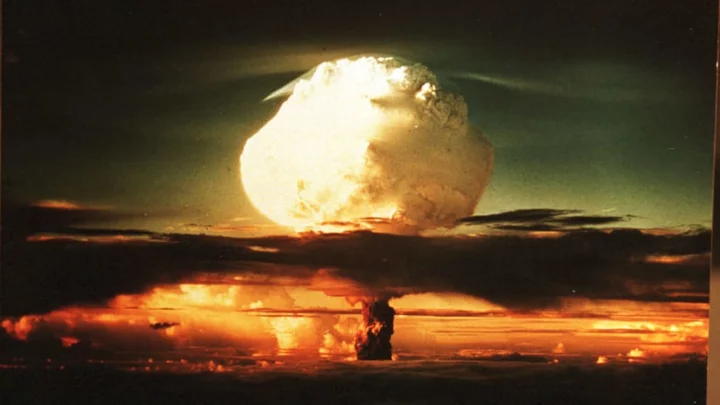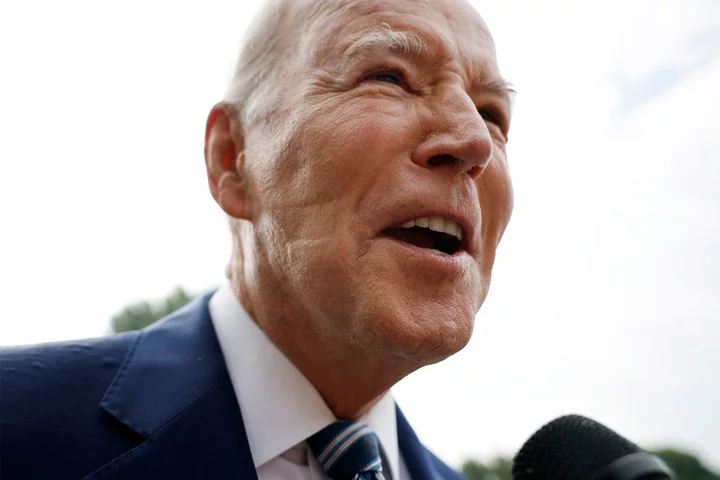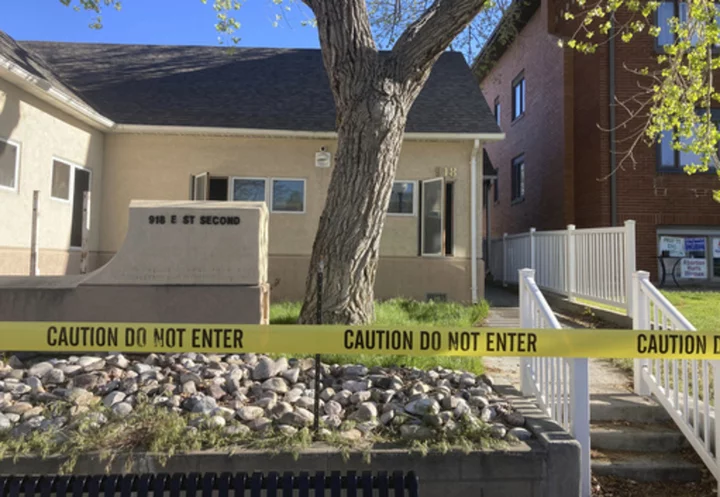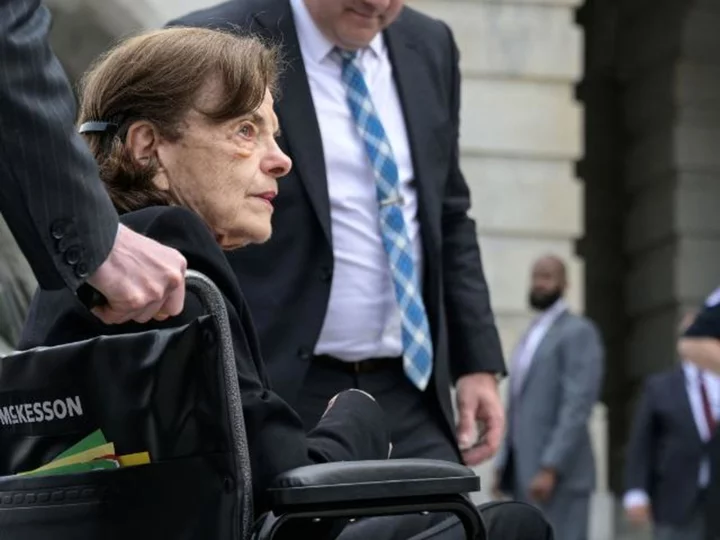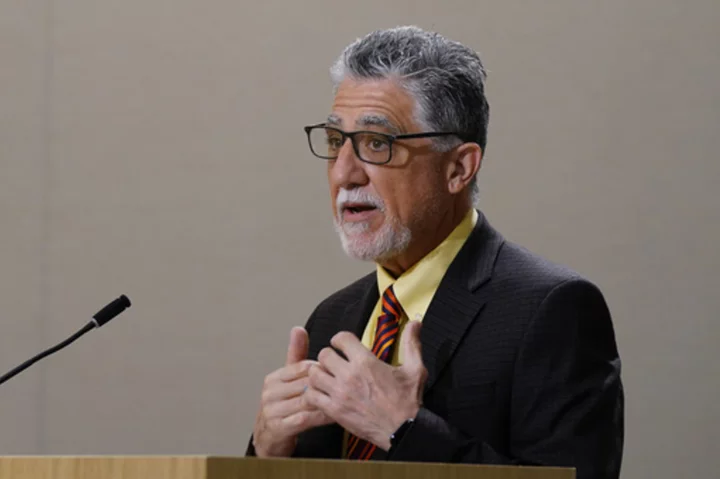During World War II, America’s greatest minds were assembled under the secretive title “the Manhattan Project” to create the deadliest weapon the world had ever seen—an atomic bomb. Their complicated but charismatic leader was J. Robert Oppenheimer, a blue-eyed, rake-thin theoretical physicist who wore a porkpie hat and read Sanskrit.
The unlikely story of the atomic bomb and its ambivalent mastermind is coming to the silver screen this July, in Christopher Nolan’s film Oppenheimer. Brush up on your Manhattan Project knowledge with these nine facts about the twisted path to the nuclear age.
1. A team of German scientists discovered nuclear fission—and atomic weapons suddenly became a possibility.
In 1938, physicists Otto Hahn and Fritz Strassmann found that when a neutron with enough energy strikes a “fissile” atom, the atom splinters into pieces, releasing lots of energy and a bunch more neutrons.
The energy from a single split atom won’t cause an explosion. But if a scientist figured out how to get lots of fissile atoms really close together and then split one, the resulting neutrons would be able to find and split more fissile atoms. This chain reaction would then quickly cascade into a massive burst of energy, causing an explosion.
The timing couldn’t have been worse for such a deadly possibility. While many European physicists fled the Nazi regime, some German scientists had given Hitler a head-start on a potential bomb.
The U.S. government realized the urgency of producing a nuclear weapon to counteract it. The Army began what would be called the “Manhattan Project” (since its first offices were in Manhattan), building factories to produce raw materials and recruiting the country’s most brilliant physicists to move to a planned laboratory in New Mexico called “Project Y.” Major General Leslie Groves, in charge of choosing the scientific team, handpicked Oppenheimer to lead the lab in October 1942.
2. J. Robert Oppenheimer wasn’t an obvious fit for the leadership role.
Oppenheimer was a professor at the University of California, Berkeley known for his signature porkpie hat and nonstop chain-smoking. Though a brilliant theorist, “Oppie,” as everyone called him, had basically no experience working in a lab. And although he was widely respected, some questioned whether he could manage the big personalities on the project, which included as many as 20 current or future Nobel Prize winners.
Plus, he just didn’t seem like the type to head a major military project. Thanks to his paltry weight and chronic cough (from smoking four packs of cigarettes a day), an army physical declared Oppenheimer “permanently physically incapacitated” from serving. He had to sign a waiver to begin his post, according to American Prometheus: The Triumph and Tragedy of J. Robert Oppenheimer by Kai Bird and Martin J. Sherwin (on which Nolan’s film is based).
The military was also concerned about Oppenheimer’s left-wing activism: He was close with several Communist Party members. The Soviet Union was America’s ally, but the FBI considered communists at home to be “dangerous subversives.” Still, Groves insisted that Oppenheimer was the man for the job.
3. The lab in Los Alamos, New Mexico, was like summer camp for physicists.
The tiny town in New Mexico was near Oppenheimer’s summer ranch and was remote enough for the Army to keep its activity secret. They turned the barren desert mesa into a massive laboratory, with housing for families and dormitories for single employees.
A work-hard, play-hard culture developed. The six-day workweek usually ended with a party, where Oppenheimer’s famous martinis always flowed (they reportedly hit harder at the site’s high altitude). The bachelors’ dorm preferred an even stronger concoction: pure laboratory alcohol mixed with pineapple juice and poured over dry ice, according to Bird and Sherwin. At one time, 22-year-old future Nobelist Richard Feynman went around cracking the combinations to locked filing cabinets all over the site. The next morning, bewildered guards found them open with nothing amiss.
4. The Manhattan Project’s challenge was gathering enough fissile atoms and smashing them close enough together to cause a chain reaction.
Simply making the 14 pounds of plutonium required for an atomic bomb took a massive industrial effort. In fact, the Nazi regime mostly gave up on its bomb plans because creating that amount of fissile material seemed impossible. The U.S. Army built several top-secret factories just to produce uranium and turn it into plutonium.
Even when they had their baseball-sized hunk of plutonium in hand, the physicists at Los Alamos had to figure out how to compress the ball to half its size so the chain reaction could proceed. They ended up surrounding it with precisely shaped pieces of TNT that would explode together in just the right way to force the ball inward on itself.
5. The U.S. Army was fixated on keeping the project a secret from our Soviet allies.
Oppenheimer and the other physicists, many of whom had ties to the Communist Party or organized labor, were placed under constant surveillance.
The government’s fears turned out to be legitimate: before moving to Los Alamos, Oppenheimer was approached by a friend about providing technical intelligence to Soviet agents through a backchannel. Even though he flatly refused, his failure to immediately report the conversation would later become a major scandal.
Despite all the security measures, several members of the Manhattan Project spied for the Soviet Union, including two high-ranking physicists at Los Alamos, Theodore Hall and Klaus Fuchs.
6. Manhattan Project physicists worried about the effect their creation would have on world powers.
The Manhattan Project had been sold to the scientists as the U.S.’s only option for defeating a nuclear-armed Nazi Germany. But, by 1944, it was clear that Germany had no bomb and the allies would beat them without the deployment of atomic weapons.
Groves shocked several physicists at a dinner that year when he stated that the Soviets were the real target of the program. Many physicists felt the Soviet Union had made tremendous sacrifices to keep victory out of Hitler’s hands. Moreover, they believed excluding Russian scientists would only lead to a postwar arms race. Theodore Hall later claimed that this fear was what led him to spy for the Soviets.
7. The scientists pushed back when they realized their government might use the bomb on Japan.
They argued for the U.S. to show its hand, using the fact that the U.S. had developed an atomic bomb as leverage to end the war with Japan, which had no atomic program. They hoped the revelation of the bomb’s existence would preclude the need to actually use it. But their efforts, which included a petition in July 1945 signed by 70 scientists, never reached the new president, Harry S. Truman.
The petition was received by the incoming Secretary of State James F. Byrnes, who declined to show it to Truman. Byrnes also sat on the Interim Committee, along with Oppenheimer and other military and scientific leaders, who were appointed by the secretary of war to advise the president on the bomb’s use. When the committee recommended deploying the bomb immediately, Oppenheimer notably failed to convey the staunch opposition felt by so many of the Manhattan Project’s scientists. At the time, Oppenheimer felt that the physicists should focus on making the bomb, and let the government decide how to use it.
The scientists’ concerns had come too late. For years they had worked too hard and fast for reflection, and now that the bomb was almost complete, their voices were ignored.
8. The Trinity test proved the destructive power of the bomb.
Many of the physicists thought they had successfully lobbied the government to inform the Soviets of the bomb and merely use it as a bargaining chip against Japan.
On July 16, 1945, the military successfully detonated an atomic bomb in the New Mexico desert—the first deployment of a nuclear weapon in history. The Trinity test further convinced its witnesses of their invention’s apocalyptic power. Oppenheimer was reminded of the Hindu verse: “Now I am become death, the destroyer of worlds.”
When atomic bombs were dropped on Hiroshima and Nagasaki a few weeks later, the news inspired an uncomfortable mix of jubilation and regret at Los Alamos. Some, including Oppenheimer, became increasingly depressed by the destructive outcome of their work. When he first met Truman, he said, “Mr. President, I feel I have blood on my hands.”
9. After the U.S. deployed the atomic bombs, Oppenheimer became a crusader against nuclear weapons.
The now-famous “father of the atomic bomb” tried to forestall a postwar arms race by pushing for international regulation of atomic weapons and fighting against the development of the hydrogen bomb.
The H-bomb harnesses the fission reactions’ energy to ignite a nuclear fusion reaction like those that power the sun, creating an explosion thousands of times larger than the atomic bombs used against Japan. Despite Oppenheimer’s opposition, the bomb was developed and successfully tested in 1952.
In 1954, Oppenheimer was stripped of his security clearance by the Atomic Energy Commission after a hearing on his left-wing associations before the war, orchestrated by his political enemies because of his stance on nuclear weapon non-proliferation.
Though the two bombs in Hiroshima and Nagasaki remain the only nuclear weapons ever deployed in combat, the U.S. and five other countries conducted more than 2000 nuclear tests after 1945. Over 70 nations signed the Comprehensive Nuclear-Test-Ban Treaty, outlawing the practice in 1996.
This article was originally published on www.mentalfloss.com as 9 Explosive Facts About the Manhattan Project.

